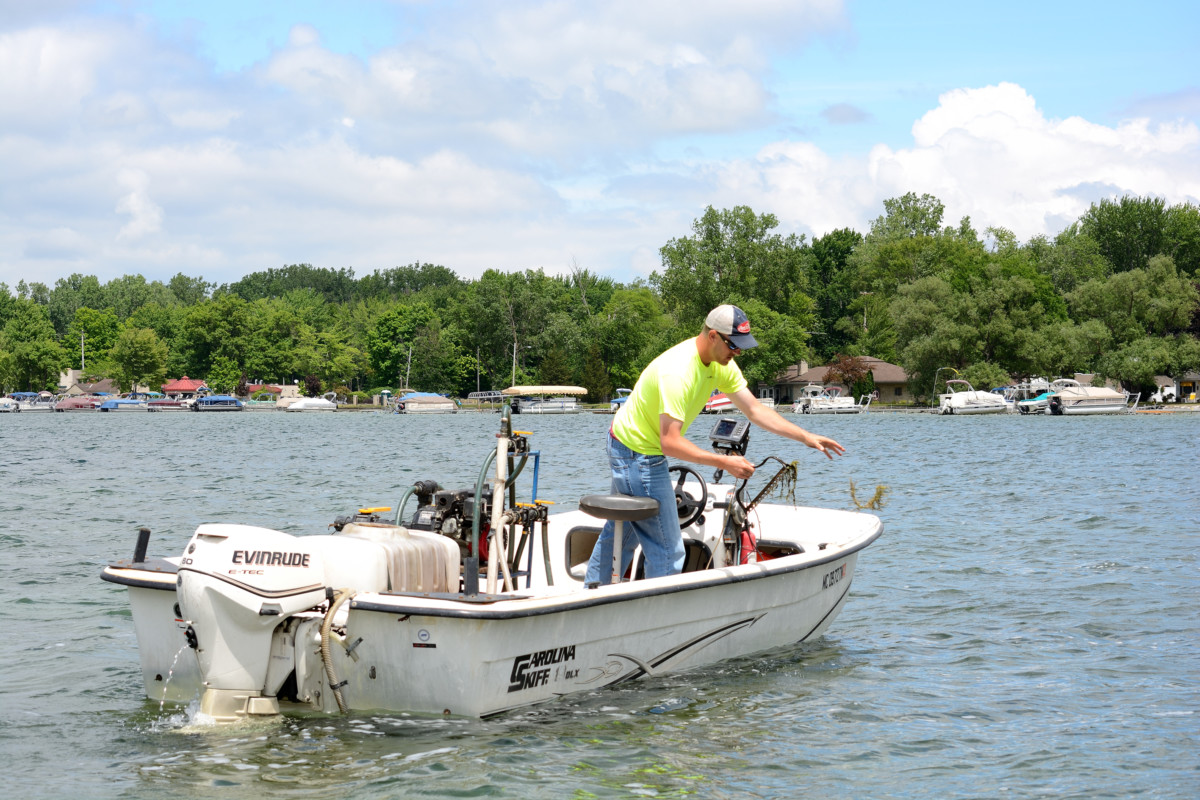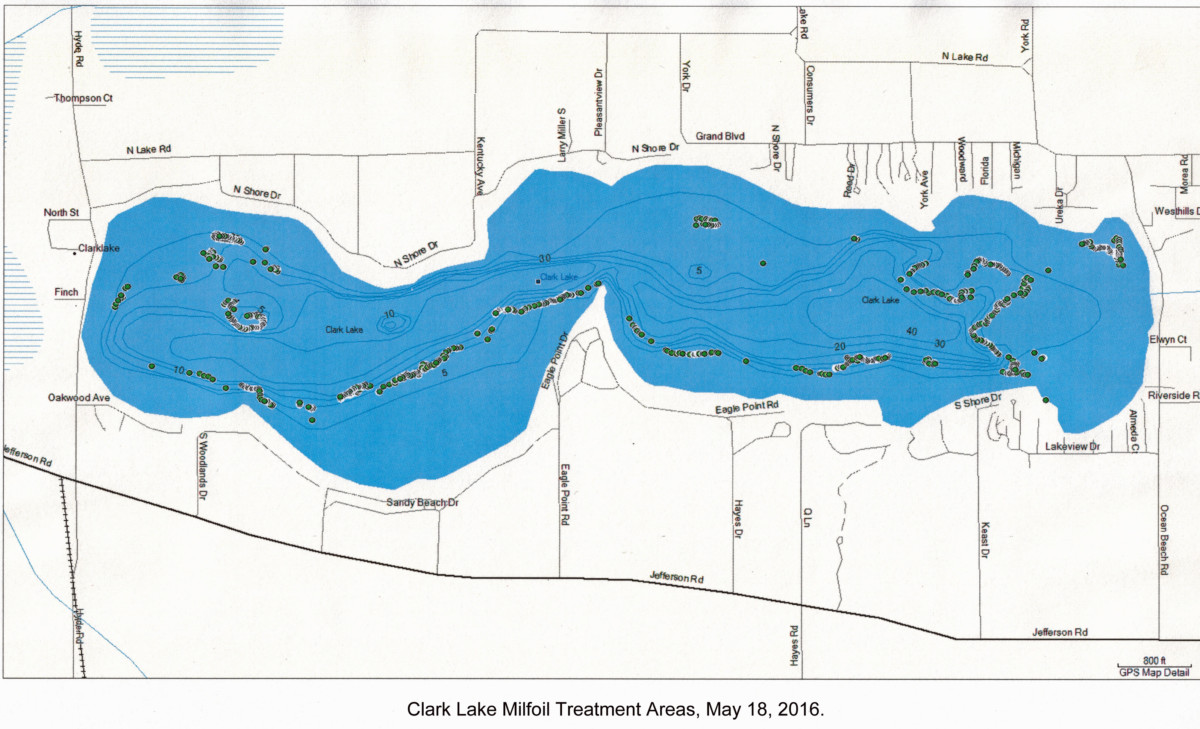As reported earlier, the results of May 18th’s treatment of invasive weeds in Clark Lake are encouraging. As noted by Professional Lake Management’s (PLM’s) Jeff Fischer, “the offshore areas look particularly good. Steve Hanson, also from PLM, comments that the hybrid Eurasian water milfoil (HEWM) “along the drop-offs collapsed,” just as hoped. The product used, Renovate OTF, is designed to stimulate the plant to grow wildly so that it extend itself to the point that its cells burst. At that point the invasive plant collapses on itself.

Jeff Fischer on Tuesday, June 7th. The pump apparatus was not used at Clark Lake. The treatment is in the form of granules that fall directly on the plants.
Steve Hanson also reports progress at the east end near the County Park, the location of one of the most stubborn patches. Said Steve, “it’s too early to tell the final outcome.” There is a crusty mass on the bottom that would indicate the plants were successfully hit, but some green shoots were also evident. That situation will be monitored to see if additional treatment is needed. Additional dates have already been set in case of new outbreaks. Those tentative dates are for the weeks of June 13, July 18, and August 18.
The survey this spring found 30 acres of HEWM in the lake. That’s more than last year, in spite of the steps taken in 2015. Because of legal limitations, only 4-acres of the 20 found could be treated at that time. The remaining 16-acres multiplied rapidly to reach the 30-acre total this spring. That’s not a surprise. This invasive species can choke a lake if vigorous action is not taken. Lakes that did not take action found that HEWM curtails boating and other recreational uses of the lake, destroys wildlife habitat and hurts property values.
Below is a map of the lake that shows locations where HEWM was detected in a survey conducted Friday, May 13th.
Notices were mailed to lake front property owners as well as posted on each property the day of treatment. According to PLM’s Steve Hanson, “Renovate OTF has been most effective in treating HEWM in lakes like Clark Lake.” He also points out that the restrictions apply only to areas within 100 feet of treatment zones. Much of the HEWM in Clark Lake is found along drop-offs or out in the middle of the lake, not within 100 feet of the shoreline.
Establishing the SAD was the culmination of a year-long drive by Clark Lake residents to stiffen the fight against this invasive weed. When DNA testing confirmed its presence in the lake and a survey in fall 2014 revealed about 20 acres in the lake, these residents formed the Clark Lake Invasive Species committee. They quickly came face-to-face with an ugly truth of the threat HEWM poses. The SAD allows treatment wherever the weed is found in the lake. The SAD also supports the cost of the treatment through a $64.42 per year assessment to owners of each lakefront property.
Through private donations to the Clark Lake Spirit Foundation, four areas of the lake were treated early last summer, the approximately-four acres mentioned above. PLM performed the treatment with a permit from the DEQ and with the consent of property owners. Because of the limitation of property owner rights, the areas treated stopped at 250 feet from shore. HEWM grows in waters of up to 20 feet deep, and there is a lots of it beyond 250 feet. The SAD addresses this limitation.
The Clark Lake Invasive Species Committee consists of Clark Lake volunteers who researched the problem thoroughly and concluded the only way to deal with HEWM was by the application of approved herbicides. They then took the message door to door, held a public information hearing in December 2014, and last spring started a petition drive to create the SAD. All along the way, progress was reported in detail on this website. At the first public hearing in August 2015, committee chairman John Deming told the trustees and the audience about community response. “In taking the SAD concept to residents, the committee found overwhelming support–95% of lakefront property owners contacted by the committee signed the SAD petition.” The committee delivered to the township petitions signed by 74% of the lakefront owners. Columbia Township trustees passed the SAD resolution unanimously.











